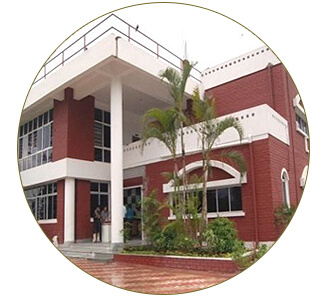Biodiversity conservation, Herbal Garden and Nursery
Biodiversity is traditionally defined as the variety of life on Earth in all its forms. It comprises of the number of species, their genetic variations and their interaction within complex ecosystems. Humans depend on biodiversity resources for meeting their survival needs in terms of food, fodder, fibre, energy, medicine and host of other uses. Besides biodiversity provides us host of supporting and regulating ecosystem services such as plants cconverting energy from the sun and makes it available to other life forms, bacteria and other microbes break down organic matter into nutrients to maintain healthy soil for growing crops, pollinators support plant reproduction, plants sequester carbon. In a nutshell biodiversity provides us with clean air and water, fertile soil, crop production through pollination and help us adapt and mitigate climate change.
However, over the years world biodiversity has been declining at an alarming rate over the years. It is agreed across the board that anthropogenic activities like loss of habitat due to land use changes, over harvesting of the species to gain short term returns, environmental and climate change are the main drivers for biodiversity loss. Despite having number of international conventions and agreements like UN Convention of Biological Diversity, UN Convention of Parties and the National Legislations earth’s biodiversity is fast depleting. Despite observing the UN Decade of Biodiversity from 2011-2020 that aimed “ to inspire broad-based action in support of biodiversity and implementation of the Strategic Plan for Biodiversity” a report published by UN in 2019 indicates that “one million species – out of an estimated total of eight million – are threatened with extinction, many within decades”.
Biodiversity can be conserved by adopting the strategy of both in-situ and ex situ conservation.
However, it is not possible to conserve the biodiversity without involvement of the local community and their participation at all level for developing strategy, its implementation and monitoring. An equitable access and benefit sharing arrangement has to be in place to incentivize the communities.
The Biological Diversity Act 2002 has empowered the local community for conserving their biological resources by preparing People’s Biodiversity Register, making sustainable use of the resources and getting an equitable share of benefits out of the Commercial Use of the Biological Resources from their area by any party. However, even after two decades of implementation of the act the implementation of the Act with the true letter and spirit is yet to be achieved.
Herbal Garden – Ex situ conservation of Medicinal Plants
IBRAD has developed a methodology for involving the local community to identify the herbal plants, timber and Non Timber Forest Products that are available in their locality and their threat status. Local people and the traditional healers from Baiga, Lodha and Mankidia tribal communities of Mundadadar and Ghoghra villages in Chhattisgarh and Nedam and Dengam villages in Odisha are involved to identify the plants that are becoming rare or threatened at the local level and have a digital documentation.
The next step is to organize the villagers to identify a common plot in the village and establish a community herbal garden. The planting materials are collected from the wild and then planted in the herbal garden for having ex situ conservation of the medicinal plants.
It helps in protection of Rare, Endangered and Threatened Medicinal plants as well as conservation of the traditional knowledge and practices associated with them.
Community Nursery for production of quality planting materials
A nursery is a location where plants are produced for transplantation, stock for budding and grafting, for use in the plantations/fields or for sale. Some nurseries are retained for the propagation of native plants in order to restore the environment.
The Baiga, Lodha and Birhor tribal communities are involved by IBRAD to establish small community nurseries for propagation of native plants as well as production of some tree species, fruit plants and vegetables saplings. These are used by the tribals for planting in their own field and villages as well as diversifying their livelihood options. The surplus produces are sold in the market.



